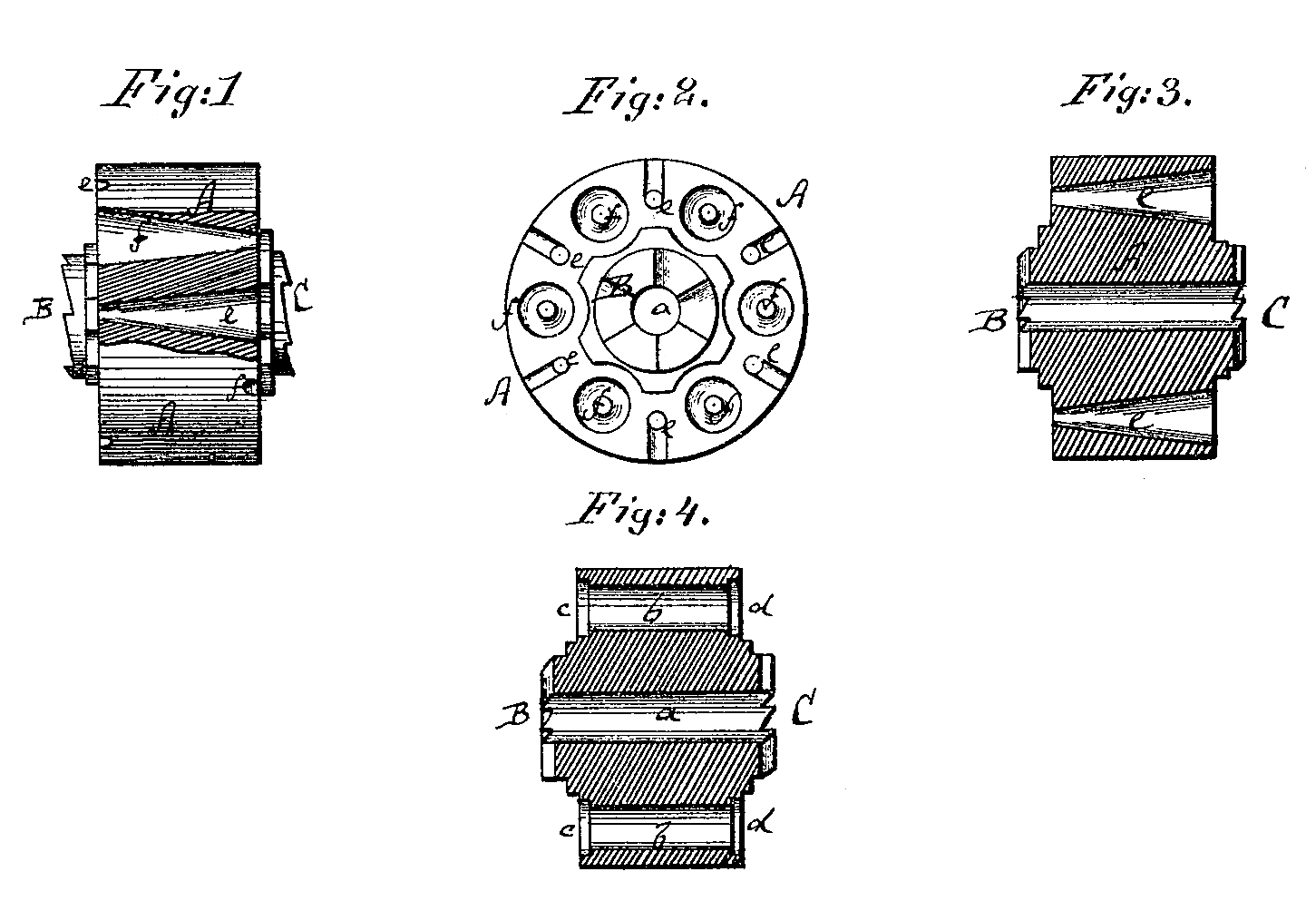US 99893
UNITED STATES PATENT OFFICE.
BYRON R. HILL, OF CRANSTON, R HODE ISLAND.
IMPROVEMENT IN REVOLVING FIRE-ARMS.
Specification forming part of Letters Patent No. 99,893, dated February 15, 1870.
To all whom it may concern:
Be it known that I, Byron R. Hill, of Cranston, in the county of Providence and State of Rhode Island, have invented a new and Improved Revolver-Cylinder; and I do hereby declare that the following is a full, clear, and exact description thereof, which will enable others skilled in the art to make and use the same, reference being had to the accompanying drawings, forming part of this specification, in which—
Figure 1 represents a side view, partly in section, of my improved revolver-cylinder. Fig. 2 is an end view of the same. Fig. 3 is a vertical longitudinal section of the same. Fig. 4 is a longitudinal section of a modification of the same.
Similar letters of reference indicate corresponding parts.
The object of this invention is to so construct the cylinders of revolving fire-arms that the same may be placed with either end against the stock, so that they can be fired from either end.
The invention consists in the arrangement of conical apertures through such cylinder, which are so distributed that the cylinder may at once contain two sets of cartridges, one set being put in from either end.
A in the drawings represents the rotating cylinder of a revolving fire-arm of suitable kind.
B C are two notched or ratchet wheels formed on the opposite ends of the cylinder, respectively, and concentrically around the central bore, a, of the same. Their teeth stand in opposite directions, so that the cylinder will turn alike when reversed. This cylinder may, as in Fig. 4, have the ordinary kind of cylindrical apertures, b b, for receiving the charges. These apertures, however, have enlargements or chambers c d at both ends. When the cartridges are inserted from one end, so that their heads or flanges may rest in the chambers c, the cylinder is inserted with the wheel B toward the firing and revolving mechanism. When all the charges have been exploded the next set of cartridges is put in from the opposite end, so that their flanges rest in the chambers d. The cartridges thus put in from the opposite side push out the shells of those formerly exploded. Thus the separate act of pushing out the old cartridge-shells by the ramrod is dispensed with, as the alternate loading from opposite ends serves the same purpose. Much time in loading is thus saved.
In Figs. 1, 2, and 3 is represented a cylinder having conical apertures e ef f for the reception of the charges. The apertures e e have their larger ends on the same end of the cylinder on which the wheel C is arranged, while the apertures f are larger in line with the wheel B. The apertures e fare arranged in a circle around the axis of the cylinder, but in alternate succession, as is clearly shown in Fig.2. By this conical form of apertures much space is economized, and a larger number of cartridges may be secured in one cylinder. The cylinder may at once be loaded from both ends. The cartridges in e are exploded when B is in contact with the working mechanism. When they are all discharged the cylinder is reversed, so that C comes into gear. Then the cartridges in fare exploded. The cartridges should be shaped to correspond with the apertures e f, and have their fulminates at the small ends.
Having thus described my invention, I claim as new and desire to secure by Letters Patent—
The conical apertures e f, arranged in reverse order in alternate succession in the cylinder of a revolving fire-arm, as set forth.
BYRON R. HILL.
Witnesses:
Orlando S. Hill,
Erastus O. King.

